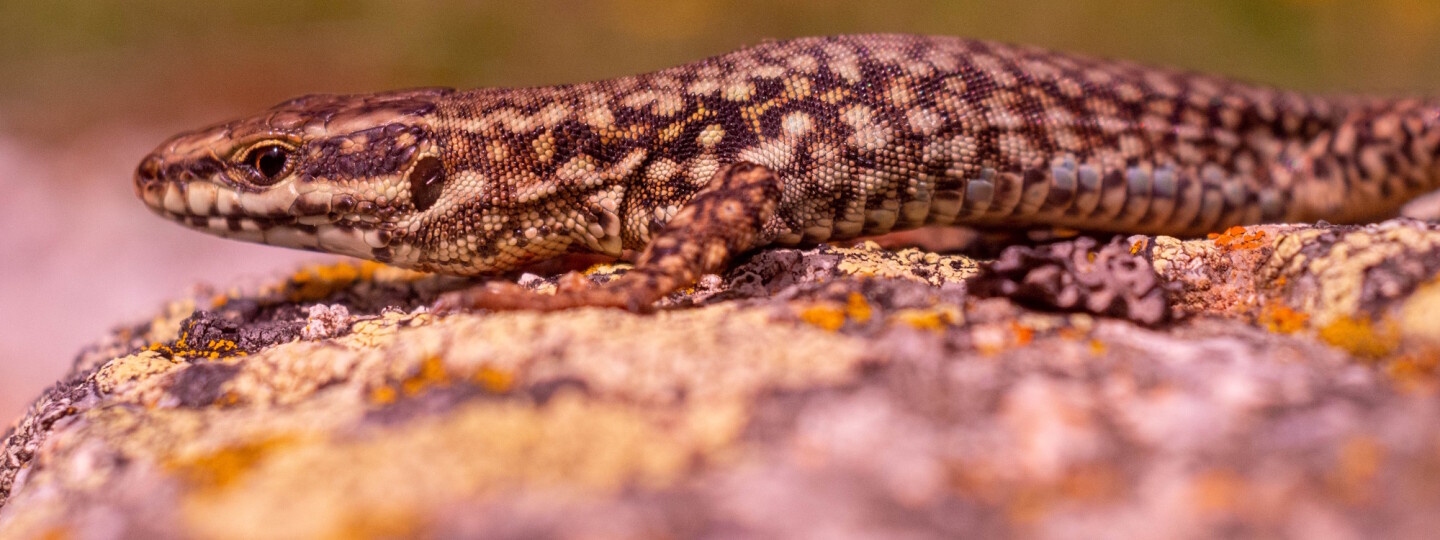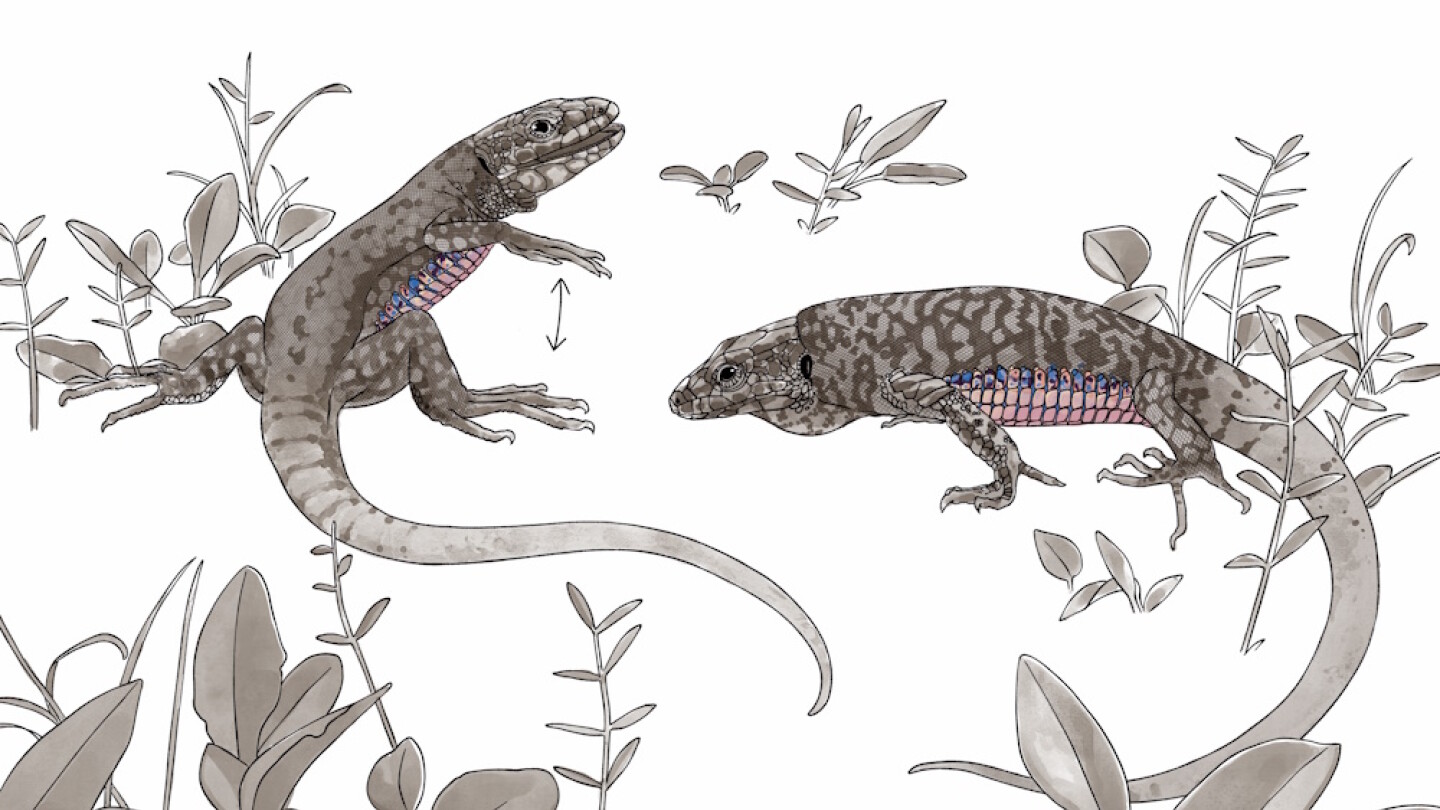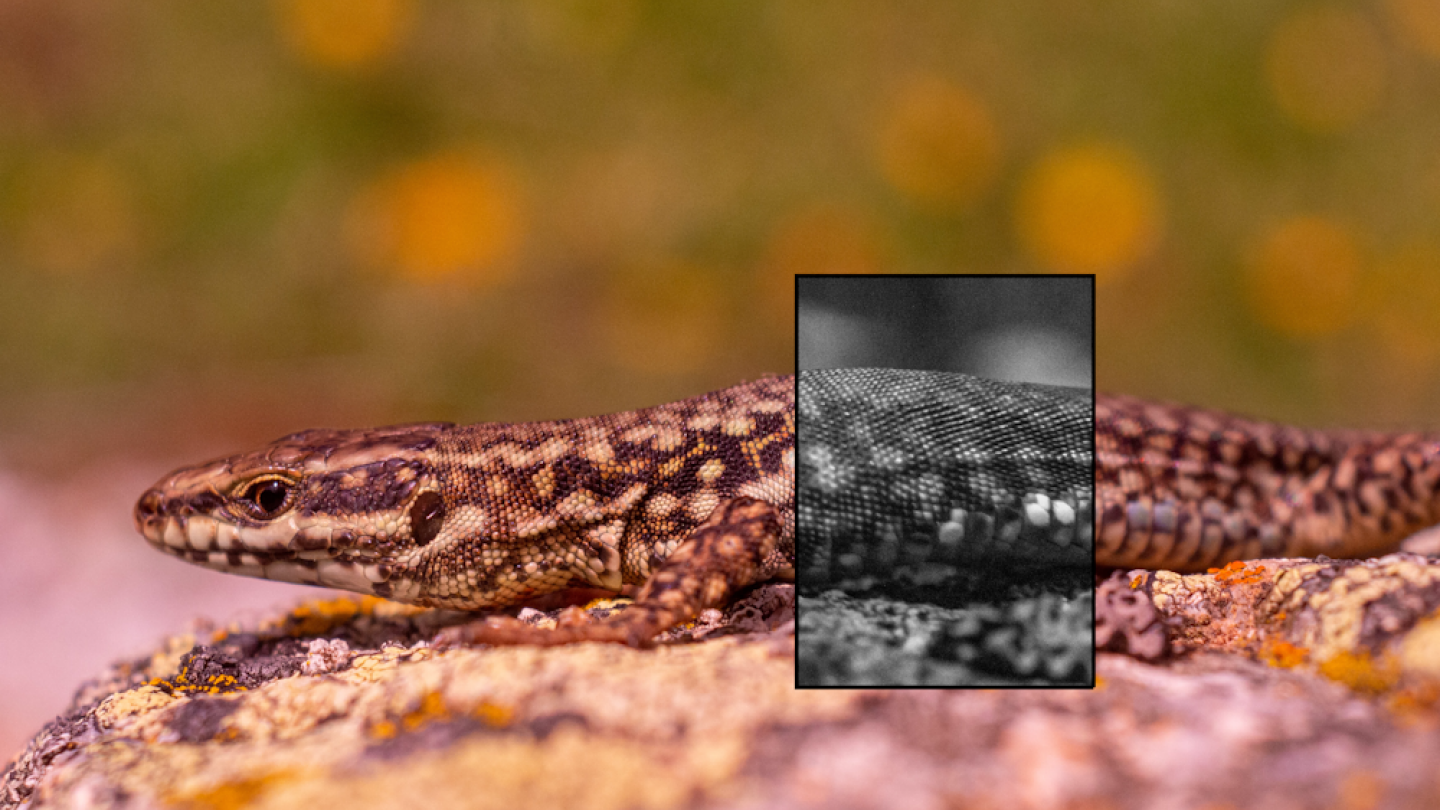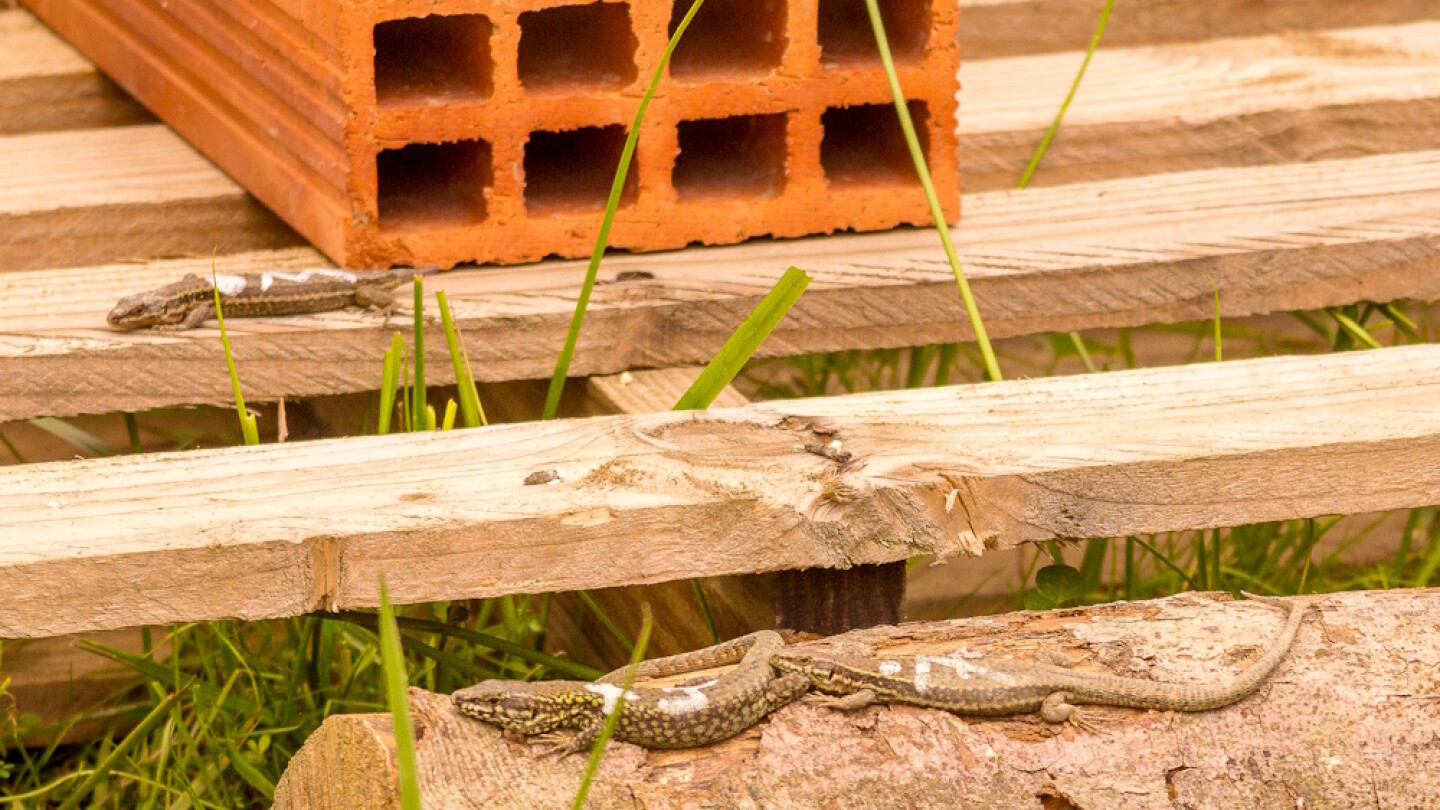An international research group found that wall lizards use specific behaviours more than colour or physical traits to settle territorial disputes. These results deepen our understanding of the complex social life of lizards.
A recent study shows that in male wall lizard, certain behaviours have a greater influence on the way they resolve territorial disputes than their size and coloration. While darker male wall lizards are more aggressive and often win, their colour does not seem to affect how rivals react to them. More than their colour and size, the lizards' behaviour influences territorial disputes: males use behaviours like hunching up and extending their throat to show they are ready to fight, while foot shakes are used to signal submission and avoid aggression.
The international research group that carried out the study included researchers from the University of Valencia in Spain, the Theoretical and Experimental Ecology Station (SETE) in Moulis, France, and the University of Turku in Finland. They observed the social behaviour of 180 common wall lizards (Podarcis muralis) kept in artificial enclosures designed for such experiments.
“Natural scientists have long been puzzled by the fact that males rarely fight to the death. You might expect competition for limited resources to be fierce, however, animal battle is often more theatre than brawl. Aggression is risky, with potential for both opponents to get hurt. Therefore, rivals benefit from resolving their disputes without resorting to harmful fights. This is where signals become crucial,” explains researcher Javier Abalos from the University of Valencia.
One poorly understood aspect is that, in many species, aggression levels are more strongly associated with the size and signals of the losing party than with the mismatch between both opponents.
“One could imagine that weaker individuals would retreat earlier when facing increasingly stronger rivals, while opponents with matching signals would fight longer and escalate aggression. However, time and again we find with different species that the losing party persists until they reach a fixed, self-imposed threshold regardless of their mismatch with the opponent,” notes researcher Guillem Pérez i de Lanuza from the University of Valencia.
The reason for this may lie in the way animals transmit different types of information through different signals during contests. Colour patches that become fixed when the animal reaches adulthood, such as the orange chest of a European robin, are good signals if they are linked to stable traits such as body size, strength, and hormone levels. In contrast, behaviours that can be used selectively during interactions seem better suited to communicate more changeable traits, like how motivated an individual is to fight.
“Our research compared the impact of these fixed traits and flexible behaviours on the outcome and intensity of lizard contests. We also explored why there often seems to be a mismatch between signals and contest intensity," says researcher Océane Liehrmann from the University of Turku.
Territorial disputes are crucial for the reproductive success of male lizards
Springtime in the Pyrenees marks the start of territorial battles among male wall lizards, as they compete fiercely for the best sunbathing spots, crevices for shelter, and bug-rich vegetation.
"During these contests, male wall lizards use a fascinating suite of signals, like revealing hidden colour patches and performing behavioural displays. Adult males – and some females –have UV-blue spots on their belly sides often surrounded by black. When males approach each other, they often adopt a raised-body posture, extend their throat, arch their back, and flatten their body. Additionally, they often perform rapid forelimb movements in the air. Interestingly, this is just one of the several distinct types of foot shakes shown by the species, with some being broadcast, some being directed at other lizards, and some at potential predators,” says researcher Enrique Font from the University of Valencia.
In the study, the sites in the artificial enclosures were set up to encourage territorial behaviour in male lizards. The researchers placed six wooden pallets in each enclosure and created three high-quality and three low-quality sites by varying the number of rocks, bricks and logs stacked on top of them. During the experiment, there were clear differences in the male and female behaviour: 80 percent of females settled in the high-quality sites, while only 20 percent of males did the same. The males that occupied these prime spots won more fights, interacted with more females, and fathered more offspring than those in the lower-quality sites.
Behavioural displays, such as raised-body postures and foot shakes, were far more decisive than the fixed colour patches in determining the contest outcome of male lizards. Interestingly, the researchers found that while male lizards who exhibited more black coloration tended to be more aggressive and prevail in contests, their coloration did not seem to affect how their rivals behaved towards them.
“Black coloration was the only fixed trait associated with winning, but its impact was much smaller compared to the effect of behavioural displays. Black coloration seems to be associated with aggression but not with signalling; dark male lizards were always aggressive, even when encountering even darker males. Interestingly, we found little evidence that the UV-blue patches influenced the contest outcome, despite being associated with bite force and tuned to lizard vision. This raises questions about their role – perhaps they provide categorical information, such as the sex or maturity of the lizard. Such information could help lizards assess the threat posed by potential rivals before any contest even begins," says Abalos.
Social interaction of lizards is complex
The study found that the behavioural displays affect the outcome of contests by triggering different reactions in opponents. Lizards that used raised-body posture were much more likely to win a contest, chase their rival away, and provoke bites from their opponent. In contrast, foot shakes were linked to a much higher chance of losing, but they also reduced the likelihood of being bitten or chased after retreating.
This suggests that raised-body displays and foot shakes serve as threat and appeasement signals that help lizards assess each other's intention to escalate and avoid unnecessary physical conflict,” says researcher Alicia Bartolomé from the University of Valencia.
“The findings of the study have broad implications for our understanding of animal behaviour and signalling. They challenge the idea that animal contests are settled based on fixed traits, like colour or size. Instead, animals use specific behaviours to assess each other’s aggressive intent in real time and retreat when they recognise their opponent is more determined to continue the fight,” says Fabien Aubret from SETE.
The research group hopes that their study will help change misconceptions about the social lives of lizards, often seen as simple and ruthless creatures.
“In nature, lizards often alternate between the roles of resident and intruder as they go about their daily lives. Evolution has given them a sophisticated set of social signals to communicate aggression in context and navigate a complex social environment. This nuanced understanding reveals that lizards are far more sophisticated than we often think, and we are only beginning to uncover the depth of their social communication," concludes Abalos.
More information:
Océane Liehrmann, University of Turku, oceane.liehrmann@utu.fi (languages: English)
Javier Abalos, University of Valencia, jal4@uv.es (languages: English, Spanish, Italian)




